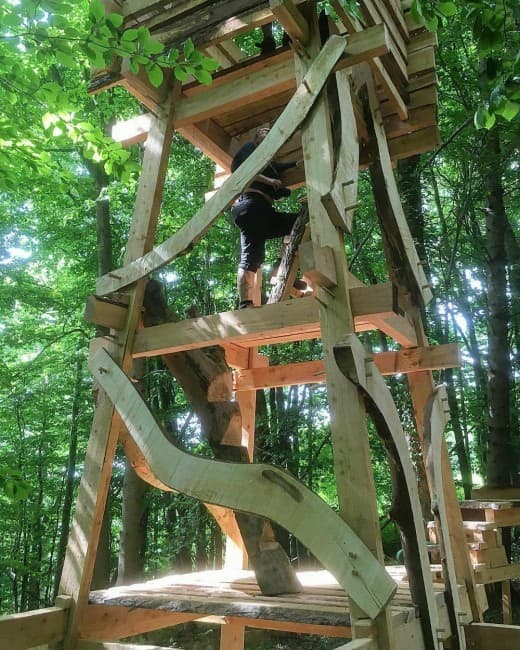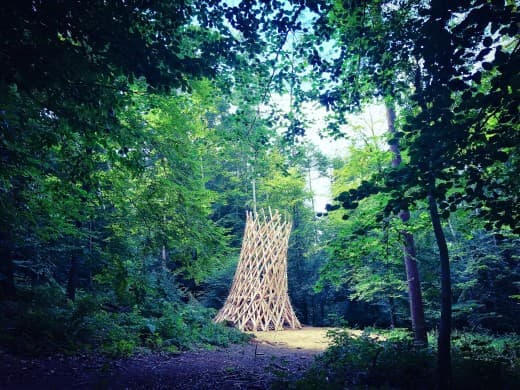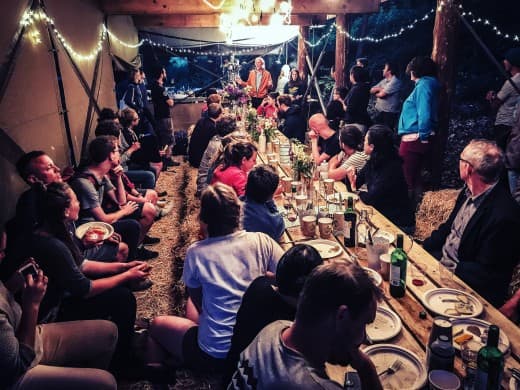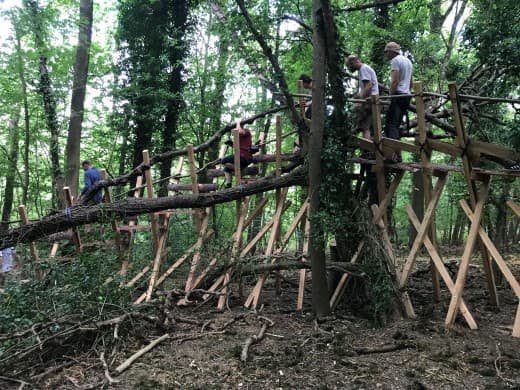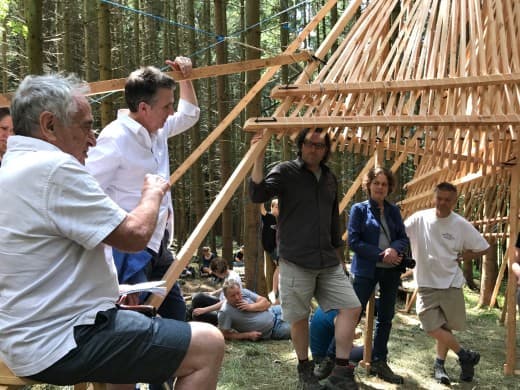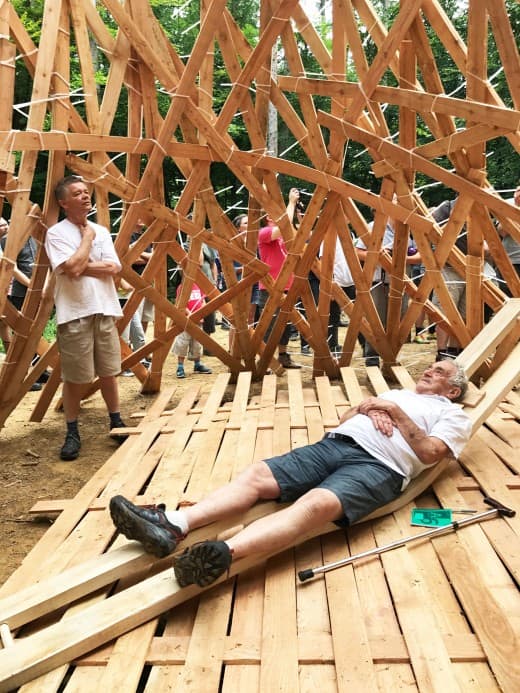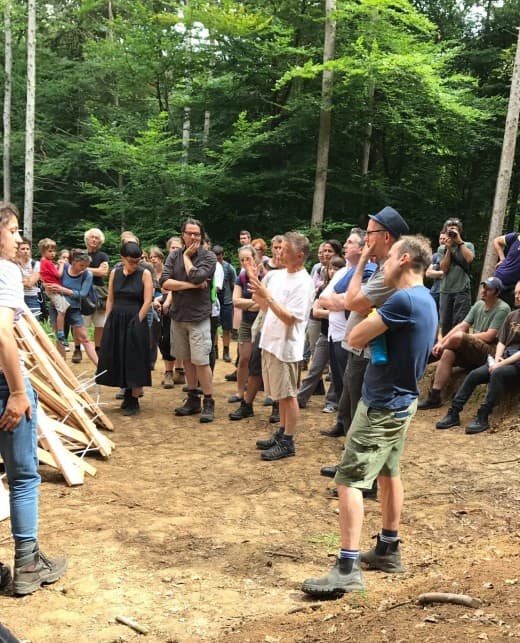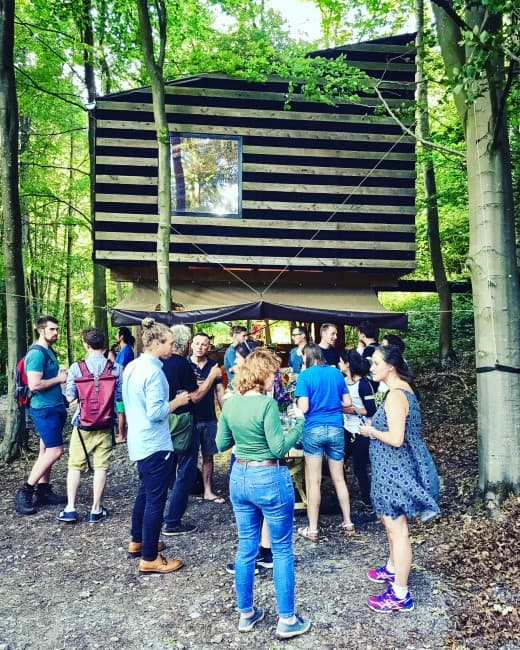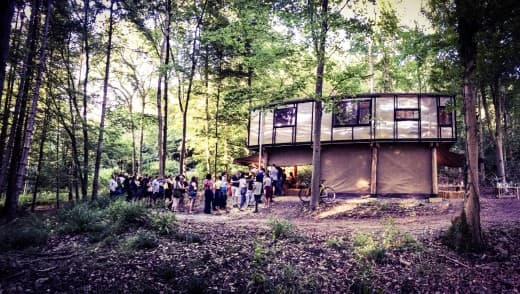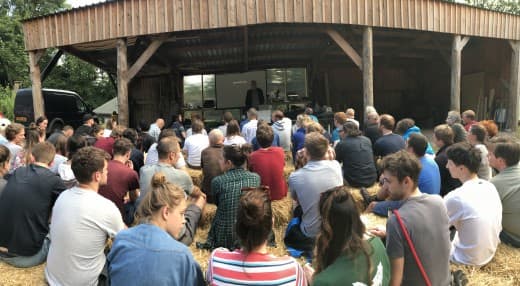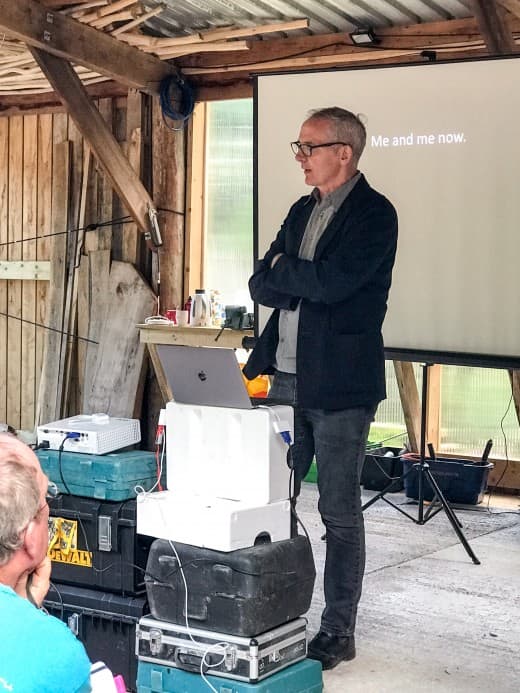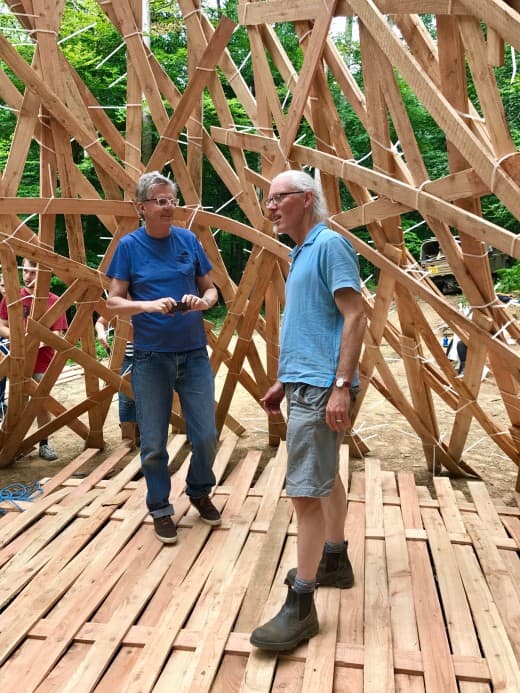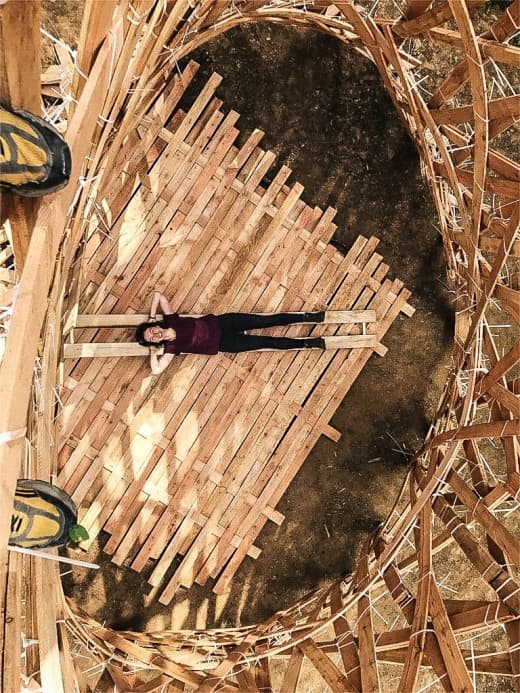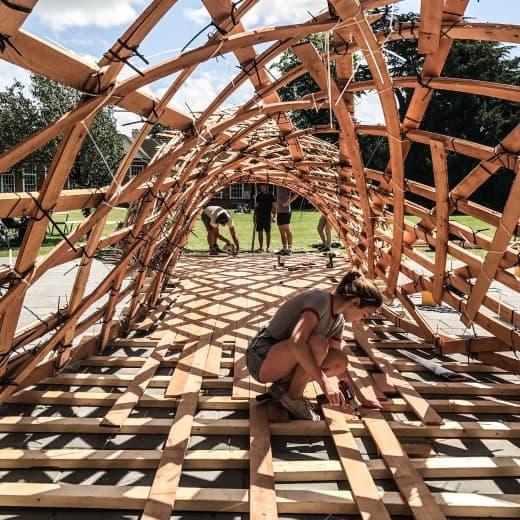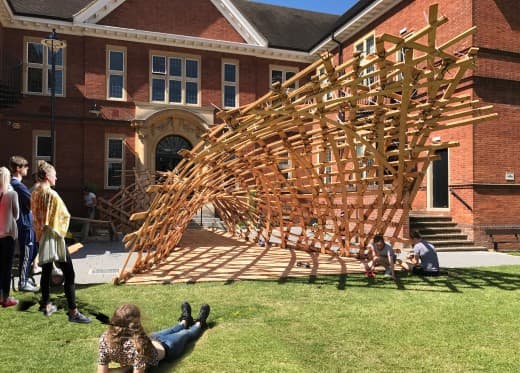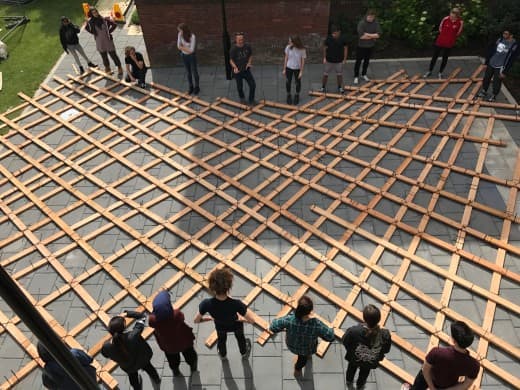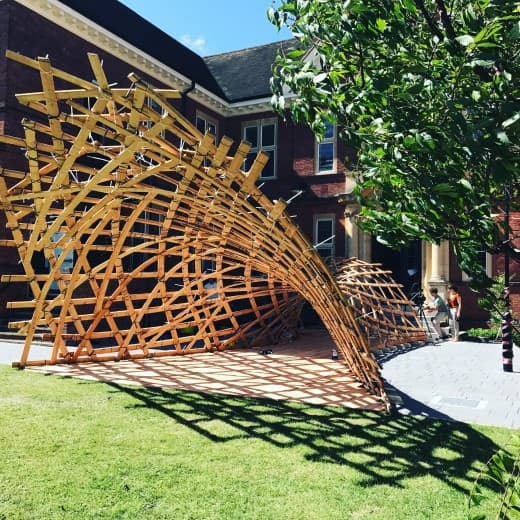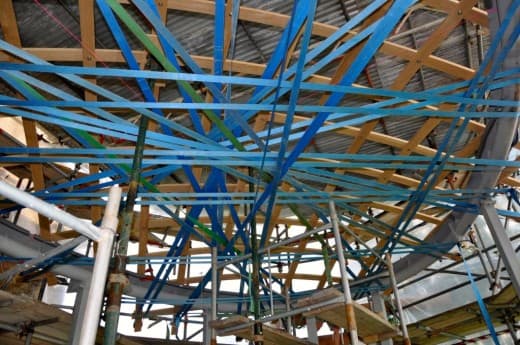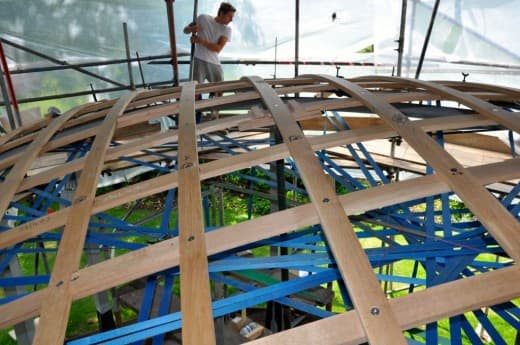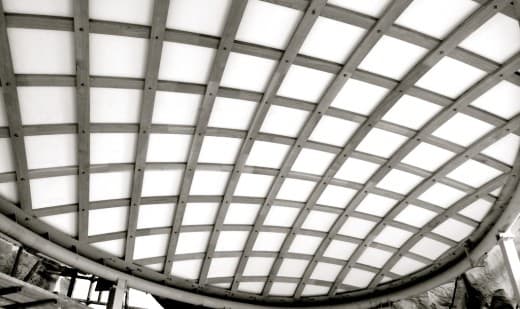 Great to see an image of our Gridshell project, designed and constructed with 1st year students on the cover of Flora Samuel’s new book which is available to purchase HERE.
Great to see an image of our Gridshell project, designed and constructed with 1st year students on the cover of Flora Samuel’s new book which is available to purchase HERE.
Below is a review of this book by Piers Taylor for the RIBA Journal.
Architects are very good at presuming their worth is evident to everyone, and yet, as Flora Samuel demonstrates, not only do many non-architects not even know what architects do, but we are also very bad at presenting the case for why we are useful – let alone essential. For much of the construction industry we’ve become dispensable and marginalized to the point of becoming little more than mere self-aggrandizing stylists for a few trophy buildings. Not only are we thought of as petulant dandies who add cost and complexity, we are also considered unaffordable. The only things we care about are finishing a building, photographing it before the client screws it up, and getting it published so that we can bask in the glow from our peers. Is it any wonder we’ve become semi irrelevant to the general public, to developers, to governments and to the construction teams that we used to lead? In many ways it is tragic that a book called ‘Why Architects Matter’ had to be conceived and written at all. It isn’t possible to imagine, say, that a book titled ‘Why Doctors Matter’ would have had to be written, or even ‘Why Carpenters Matter’. We know we need them and the arguments for their existences are obvious.
In some ways, an alternative title for this book might have been called (with apologies to Will Hutton) ‘The State We’re In’ – or certainly the first part of the book, which deals with our plight. If public opinion is any measure, it’s a sorry state that we are in, and one where architect bashing is pretty much a national sport. While we’ve always been a profession in crisis, we’re now in a, new, special kind of crisis of our own making. Samuel sets out that for the most part, we are responsible for our own downfall, being not only incapable of demonstrating why our skills and knowledge are essential but also being unclear about what our skills and knowledge are. The problem, in many ways, is that we are fixated on the wrong things: time and again, when asked to justify our existence, we call upon aesthetic codes.
Yet, as Samuel shows, most people – including the other highly skilled professionals within our teams – do not share the same aesthetic values, or even understand our language, which Samuel describes as ‘unintelligible’ to most of them. Instead of hearing this and attempting to reconcile the gulf between us and others who commission architects or work with us in design teams, we retreat further into our autonomous worlds. We seek solace in other architects and within the architectural media which we still feel reflect our values. But for the most part these values are propped up by phony ethics, false morality, and vacuous self-righteous rhetoric. Tragically, we care far more about what our peers think of us than non-architects, making us – as Jeremy Till says ‘increasingly irrelevant and ultimately irresponsible.’
Much of the reason that we’re so unhappy (our career satisfaction is at an all time low) and so loathed is that we are simply not good at explaining why what we do matters – and of course this is hindered by not being sure about what we do in the first place. In addition, Samuel argues that our self image is delusional and still propped up by our identification with the unreconstructed, totalitarian, swashbuckling alpha male heroic role models, personified by Howard Roark, our beloved Modernists – Corb, Mies – and other globe-trotting neo-liberal greats – Foster, Rogers, Koolhaus – who battle tirelessly on our behalf against the unwashed, unthinking, non believers. Poor us. Overworked, underpaid, undervalued and unappreciated. If only everyone else could be more like us, with our natty black outfits and our flowery shirt/suit jacket uniforms, our Bromptons, our perfectly aligned sock drawers, our appreciation of shadow gaps, concrete and our love of the ‘rational’.
There is salvation, however, and much of the book shows the path to redemption if we’re prepared to be a little more self reflective as a body, and stop trying to convert the naysayers. Samuel suggests that to be a ‘profession’ is to profess custody of a body of knowledge, and in making the case for architects, begins by reminding us what it is we know. She then goes on to make the case for what we might do with that knowledge. She argues that while architects are ‘socio-spatial problem solvers, integrators of complex bodies of information and masters in space-craft’ and work within knowledge-based organisations, ‘knowledge’ is not a word many architects feel very comfortable with as a way of describing the essence of our professional discipline.
Samuel suggests that we need to strategically re-frame our knowledge and skills for the twenty first century. At the moment, one of our main problems is that we identify with the ‘wrong’ body of knowledge, which is a ‘pantheon edifice of instruction, moral code, do’s and don’t’s, through which architecture as an academy is established’. Salvation, Samuel writes, is ours – but only if we are prepared to destroy the mythology of the architect as a ‘visionary’ and focus on more normative forms of research and knowledge generation and concentrate on how to make architecture appropriate to its environment.
At its heart, this is an evidence–based approach to design, which represents something of a sea change for architects, who are instinct-led generalists. Traditionally, architects aren’t effective researchers, and this needs to change. A researcher herself, Samuel’s key argument is that design research is the most effective way to improve – and share – our knowledge. First, however, we need more research to discover how to do architectural research better. Rather than being a tautological mobius strip where we disappear (even further) up our own backsides, this is a process of ‘systematic and original investigation undertaken in order to gain knowledge and understanding and de-risk innovation’, which is then widely disseminated. In the UK, we usually consider ’research’ to have a technical focus, but Samuel demonstrates that the European understanding encompasses artistic, scientific, social and business issues. This makes sense, as the built environment is an interdisciplinary problem, and Samuel makes the case for sociologists, economists, geographers, city planners and architects to retreat from our individual conceptual worlds and create more interdisciplinary connections.
Next, in addition to working more collaboratively, we need to restore links between academia and practice in order for practice to understand – and be part of – a research culture. Never have they been more disconnected, writes Samuel, for now there is something of a cultural chasm between the two. The best method of research – for practitioners – is within practice, and there is significant funding available for practice-based research available – although this is European funding, so may well, sadly, disappear. Many architects are sceptical about the need to carry out research to provide evidence for their worth which they feel to be ‘common sense’, but as Samuel shows, architects’ views of what forms ‘common sense’ differs greatly from others. Research can help us state ‘what we know’ much more effectively, and critically, help in stating our ‘value’.
Samuel reminds us architects that we generate far more value than we capture. She describes how architects work in a knowledge-based service sector, creating boundary objects in the form of models, drawings, reports, events, experience that facilitate organizational learning and the transfer of knowledge. If we can evidence our value in a manner that the world understands, writes Samuel, our value – and issues around protection of title – become non-issues. Ultimately, if a large procedural part of what we do may become robotized or hived off by apps or other professionals looking for a slice of the construction cherry pie, we are potentially saved by our ability to empathize.
My hunch is that many architects will have to work at this, but if we become more empathetic, this leaves us free to update our ideals and ethics and, via research in practice and stronger links between practice and academia, reshape our knowledge and problem-solving skills to think about future expert-systems and the development of the built environment in the long term. What that may seem a tall order, Samuel’s fundamental point to architects is that we have no choice, except to shape up, reformulate or die out. Meanwhile, eager to plan for the future, I’m off to change my business card from mere ‘architect’ to ‘socio-spatial problem solver and master in space-craft’.
© Piers Taylor 2018
